Stay out of trouble with shoulder stabilization: Don’t miss the HAGL
Anterior capsulolabral injury (Bankart lesion) is a common cause of anterior shoulder instability that is frequently treated with excellent outcomes. However, it is important not to miss associated pathology. Humeral avulsion of the glenohumeral ligament (HAGL), occurring in combination with a Bankart lesion, can present with similar findings to an isolated Bankart lesion, but if not recognized and treated will lead to recurrent instability.

Jonathan F. Dickens

Brett D. Owens
Case report
A 21-year-old rugby player sustained multiple previous subluxation episodes without a formal dislocation event. His first subluxation was the result of a collision with his arm in a hyperabducted position. His primary complaint at the time of presentation was of a sensation of inferior instability, especially while running. His MRI (Figure 1) with contrast showed a Bankart lesion and HAGL involving the anterior band. We performed an arthroscopic three-anchor Bankart repair and anterior HAGL repair. Two years after his stabilization he has returned to full activity and currently serves as a U.S. Army Ranger.
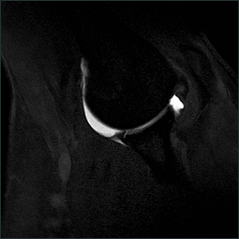
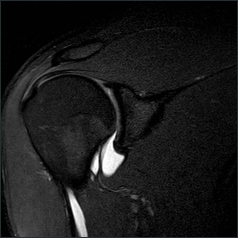
Figure 1. Axial abducted externally rotated view (left) and coronal (right) T2 MRI with intraarticular contrast demonstrate the anterior capsulolabral tear and anterior HAGL, respectively.
Source: Dickens JF, Owens BD
Discussion
HAGL lesions account for 11% or fewer of shoulder instability stabilizations. When a HAGL is present, approximately 80% occur in conjunction with a Bankart lesion, and the majority of these involve the anterior band of the glenohumeral ligament. According to the anatomically-based West Point classification of HAGL lesions, this case exemplifies the floating anterior inferior glenohumeral ligament.
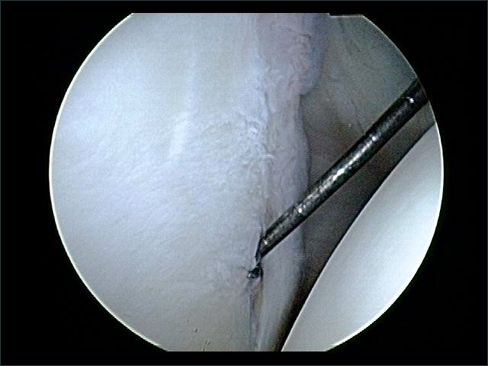
Figure 2. Bankart lesion was identified.
Source: Dickens JF, Owens BD
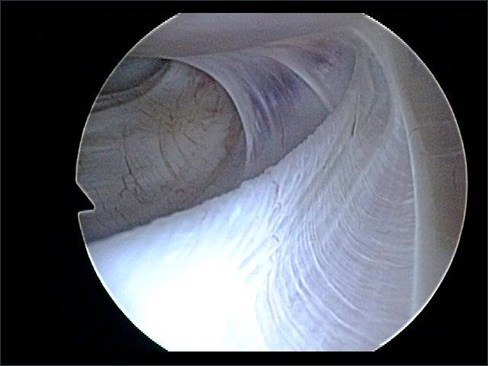
Figure 3. From the posterior viewing portal, the glenohumeral ligament appeared intact.
Source: Dickens JF, Owens BD
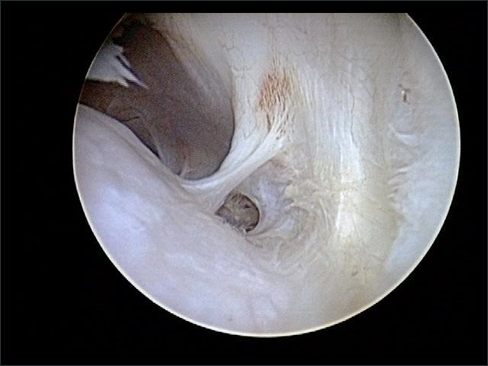
Figure 4. Given the preoperative concern for a HAGL lesion, the 70° arthroscope viewing from the anterior portal was used to identify the HAGL lesion.
Source: Dickens JF, Owens BD
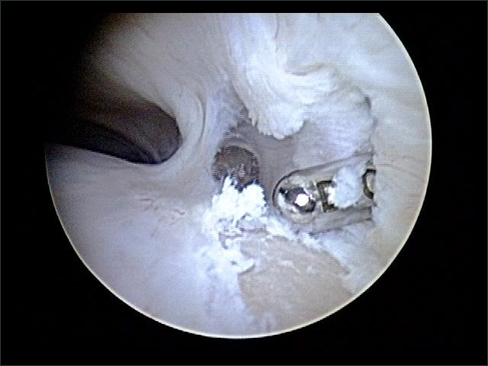
Figure 5. The humerus was prepared for anchor placement.
Source: Dickens JF, Owens BD
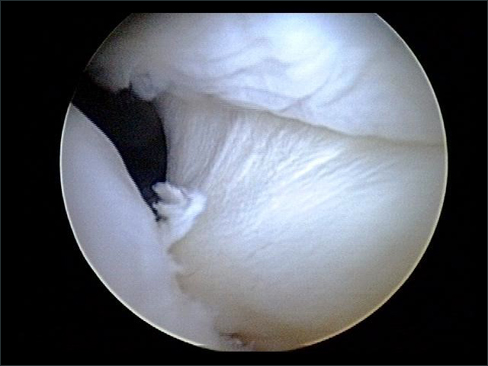
Figure 6. Suture anchors were used to complete the HAGL repair.
Source: Dickens JF, Owens BD
Preoperative identification of the floating labrum can be difficult but appropriate attention to the history, physical exam and imaging will ensure that combined HAGL and Bankart lesions are identified. These injuries typically present after a traumatic instability event, often in the setting of collision sports, in young patients. Frequently, these individuals will complain of subsequent subjective instability that is primarily in the inferior direction with symptoms frequently worse with running.
In the acute setting, tenderness over the anterior humerus at the insertion of the glenohumeral ligament can be elicited. The Gagey test, performed by abducting the arm beyond 90° while stabilizing the acromion and scapula, is highly suggestive of an injury to the inferior glenohumeral ligament complex. When suspected in the subacute or chronic setting, it is important to obtain an MRI with contrast to evaluate the glenohumeral ligament and capsule complex.
With a thorough preoperative evaluation, associated HAGL pathology can be arthroscopically evaluated with circumferential visualization of the lateral capsular attachment to the humerus. When viewing from the posterior portal, subtle anterior inferior glenohumeral ligament injuries may not be apparent. When the preoperative clinical scenario is suspicious a HAGL injury, closer inspection with a 70° arthroscope viewed from anterior may identify a tear of the anterior inferior glenohumeral ligament at its humeral insertion.
As seen in this case, the Bankart lesion was readily identified (Figure 2). From the posterior viewing portal the glenohumeral ligament appeared intact (Figure 3). However, given the preoperative concern for a HAGL lesion, the 70° arthroscope viewing from the anterior portal was used to identify the HAGL lesion (Figure 4). The humerus was prepared for anchor placement (Figure 5) and suture anchors were used to complete the HAGL repair (Figure 6).
References:
Bui-Mansfield LT. Am J Sports Med. 2007;35(11):1960–1966.
Warner JJ. Arthroscopy. 1997;13(6):749-752.
Wolf EM. Arthroscopy. 1995;11(5):600-607.
Jonathan F. Dickens, MD, and Brett D. Owens, MD, are from Keller Army Hospital, West Point, N.Y.
Disclosures: Dickens has no relevant financial disclosures; Owens is a consultant for Mitek and the Musculoskeletal Transplant Foundation.
